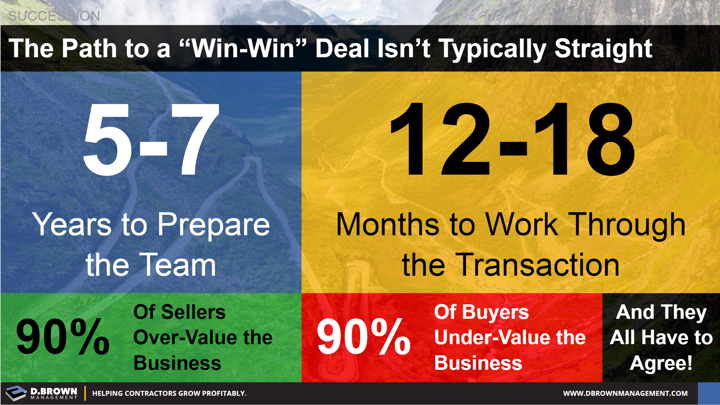The timelines cited below are for a contractor with a very hands-on, current owner with a functioning management team but not one that is ready to fully run the business.
- There is at least one leader within the management team who has expressed interest in future ownership while also demonstrating the drive and competencies required.
- The business is performing well, having enough capital and being able to regenerate its working capital every 4 or 5 years after taxes.
- The current owner of the business is actively working on setting the company up for succession, including knowing what they want to do after selling the business.
- Starting from this foundation, assume that preparing the team will take 5-7 years and the transaction details will take 12-18 months.
- The single largest factor in how much these can be shortened is the speed of human development and a foundation of trust between the parties.
If you want to discuss your particular situation, we'd love to have a conversation.

